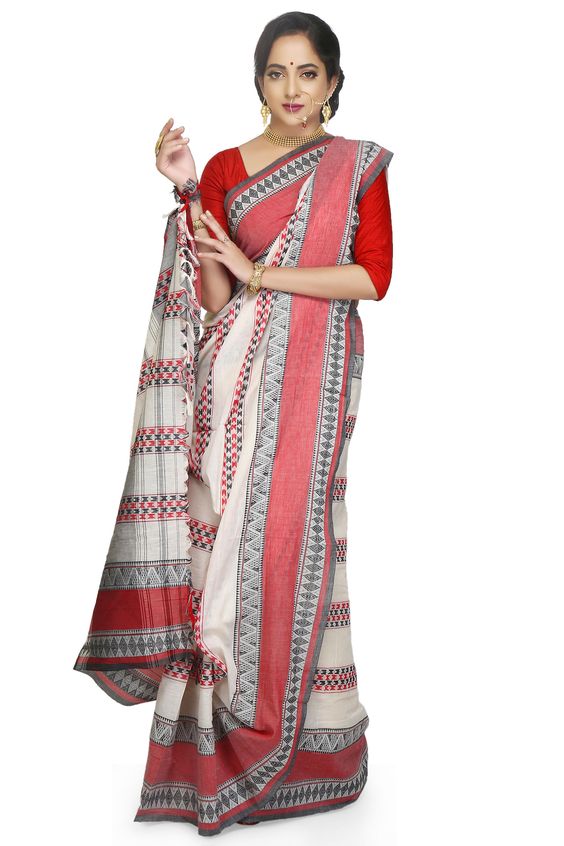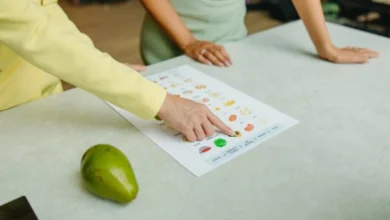The Bewitching Jamdani Sarees

The Jamdani saree is the pride of the flourishing saree industry in Bengal. It is also known as the Dhakai saree because of its origin in Dhaka, Bangladesh. The unique technique of hand-weaving muslin from cotton was developed during the Mughal period to give us the charming Jamdani saree. The Persian influences are apparent from the name since ‘Dani’ means vase. As is apparent, one can notice a lot of floral motifs on the saree. Even though the Jamdani saree suffered a decline during the British colonial period, due to cheap processed clothing from England, in recent years, the saree has been gaining popularity. Efforts from government and non-government organizations to revitalize the hand-weaving industry have greatly helped in the popularity of the Jamdani saree.
The Uniqueness of the Jamdani Saree
People believe that it takes approximately a year to weave a Jamdani saree. This is because of the tedious processes and intricate detailings involved. The work involved in creating this masterpiece is very long drawn and difficult. The weaving of a Jamdani saree is unlike any other saree. The motifs are not printed or sketched but are drawn on graph paper, which is then used to create the gorgeous motifs on the Jamdani saree. Thicker threads are used to create more complex motifs compared to other sarees. This enables the artisans to create exquisite motifs. The intensive techniques are reflected in the beauty and the class of the result. This has helped the Jamdani sarees gain national as well as international recognition.
Types of Jamdani Sarees
Their unique motifs characterize jamdani sarees. Here are common motifs you might notice on the Jamdani saree- the tersa (diagonal patterns), the jalar (motifs on the entirety of the saree), the duria (known as polka dots), the butidar (small and pretty flowers), the fulwar ( a chain of flowers arranged in a straight line) and the charkona (rectangle-shaped motifs. )
Many types of Jamdani sarees have popped out from the state of West Bengal. Each one consists of only subtle differences, depending on the area from which they originated, the weaving patterns, etc. Here are a few types of the Jamdani saree –
● Shantipur Jamdani Saree – These are manufactured in various parts of West Bengal, specifically in the town of Shantipur. They consist of many charming and elegant striped motifs on the entire length of the saree.
● Tangail Jamdani Saree – This type is woven in the Tangail district. The unique thing about this type of Jamdani is that you can see a lot of water-inspired motifs like fishes, lotuses, etc.
● Dhaniakali Jamdani Saree – Woven in Dhaniakali in West Bengal, the saree is characterized by bold colors and contrasting borders. They also have a much tighter texture when compared to the other types.
● Dhakai Jamdani Saree – This type of Jamdani saree is the original and most popular one. The fine and intricate details on the saree make you appreciate the skills and hard work of all the artisans involved in its making.
Styling of The Jamdani Saree
The beauty of the Jamdani is reflected in how the motifs appear to be floating across the light muslin underneath. Their alluring and chic nature allows them to be worn by women of every age group and every body shape. Whether you are old or young, short or tall, a perfect Jamdani saree is available. The sarees are also mixed with cotton or silk. They are popularly dyed in lighter colors like pink, yellow, orange and green, along with white shades. The contradicting color on the border gives it a bold and charming look.
This saree can be worn to any occasion, like weddings, parties, casual events and all occasion. Depending on the occasion, you can style your look with appropriate and matching jewelry. Off-beat ethnic jewelry would go best with the subtle and sophisticated beauty of the Jamdani saree. For example, oxidized jewelry, Kundan jewelry would look best.



